The small but widely scattered collection of buildings at John o’Groats has one claim to fame: it’s at the northern end of the longest distance between two inhabited places on mainland Britain. There’s not much there: a few houses, some new holiday homes, a couple of shops, a hotel and car park, and a shed next to a signpost from which a local photographer makes his living. The unusual name comes from Jan de Groot: a Dutchman who built his house here in the fourteenth century and who ran a ferry service to the Orkney Islands.
It’s a picturesque and remote spot: in particular when you get away from the settlement and walk or drive along the final stretch of coast to the lighthouse at Dunnet Head. I took the opportunity to walk through the sand dunes to Dunnet beach to add to my collection of feet self-portraits: paddling where the North Sea meets the edge of the land.
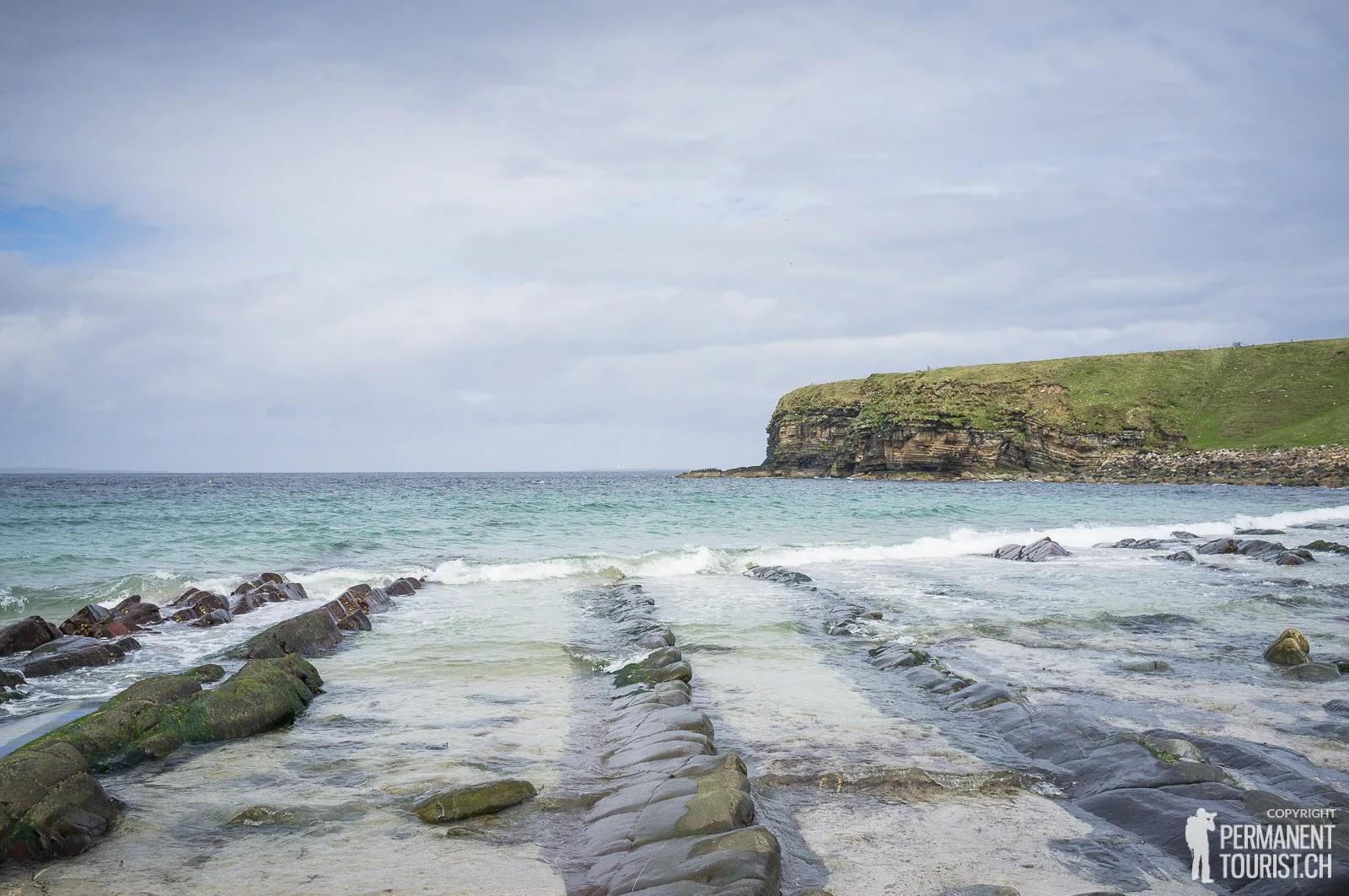
As in much of the north of Scotland, visitors have the distinct feeling of being quite a long way from anywhere else. The hamlet received a dubious award of being “the most dismal place in Scotland” in 2010, but work began in 2012 to improve the area by renovating the once-derelict hotel, adding chic holiday cabins nearby and instigating an adventure experience company with high-speed boat trips to and around the nearby island of Stroma.
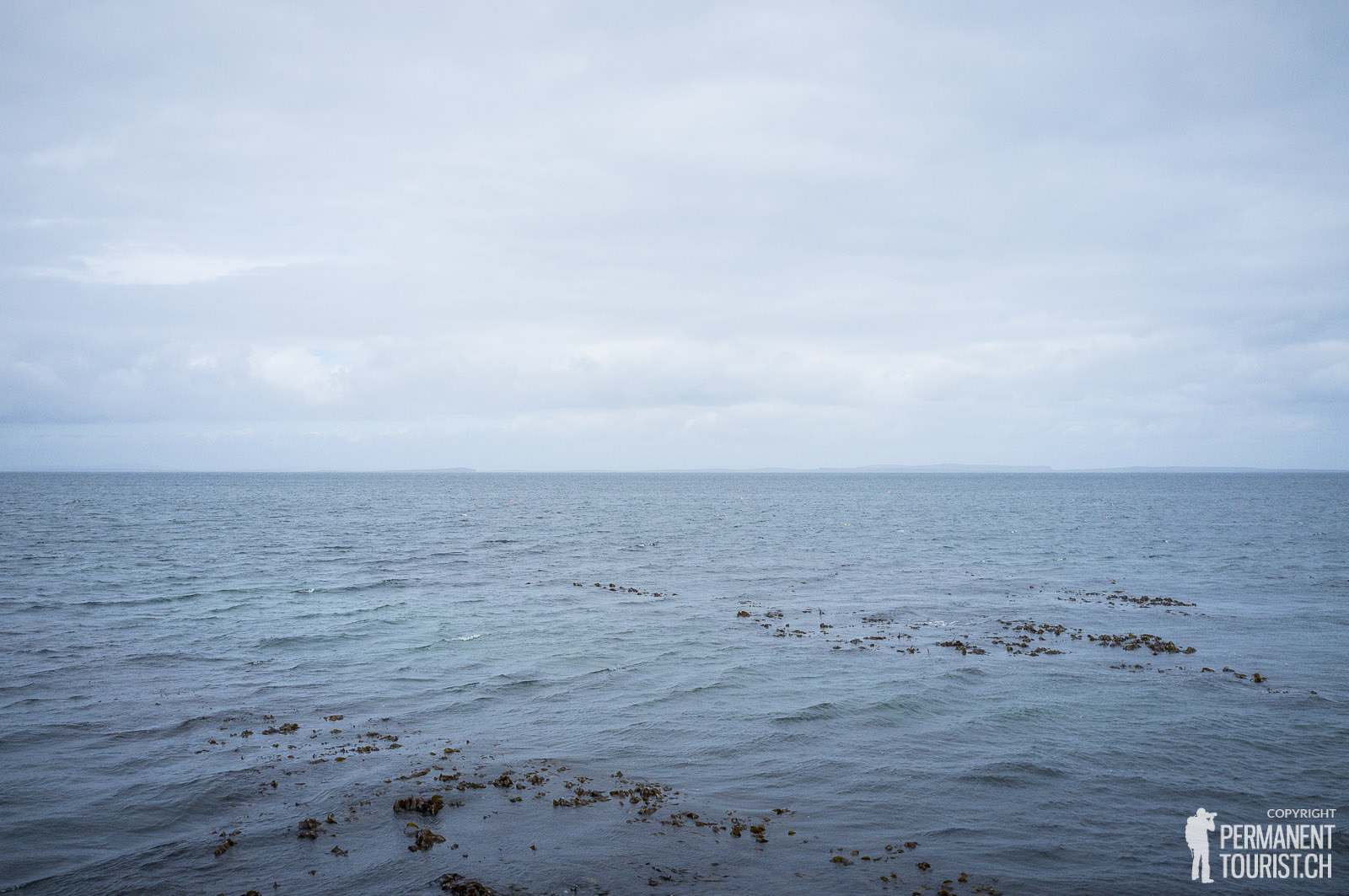
The original “First and Last” shop – i.e. the first one if you’re starting a journey south from here, and the last if you’re arriving from the south – used to be in a whitewashed, traditional croft-type building. Then someone came up with the bright idea of extending the shed-like ferry ticket office and waiting room, so the first (and last) tourist shop is now on the northern side of the car park, at the head of the jetty. It also serves as the signing-in point for those who have undertaken the journey by car, by bike, on foot or even swimming around the coast. (Nutters all, but usually for a good cause.)
It would be interesting to know what financial effect this additional twenty paces has on business, but I’m sure that there are those who will insist on marking the difference and ensuring that their trinket comes from the true “First and Last” shop. The former shop will be doing well too, though, as it’s now home to the unexpectedly modern Natural Retreats Storehouse café.
Jo and I drove up to John o’Groats in May from Alness and after wandering around the shop, we decided to get our photo taken at this most classic British destination. The white signpost is probably the most famous aspect of the place, and mirrors a very similar one at the other end of the mainland, at Land’s End in Cornwall.
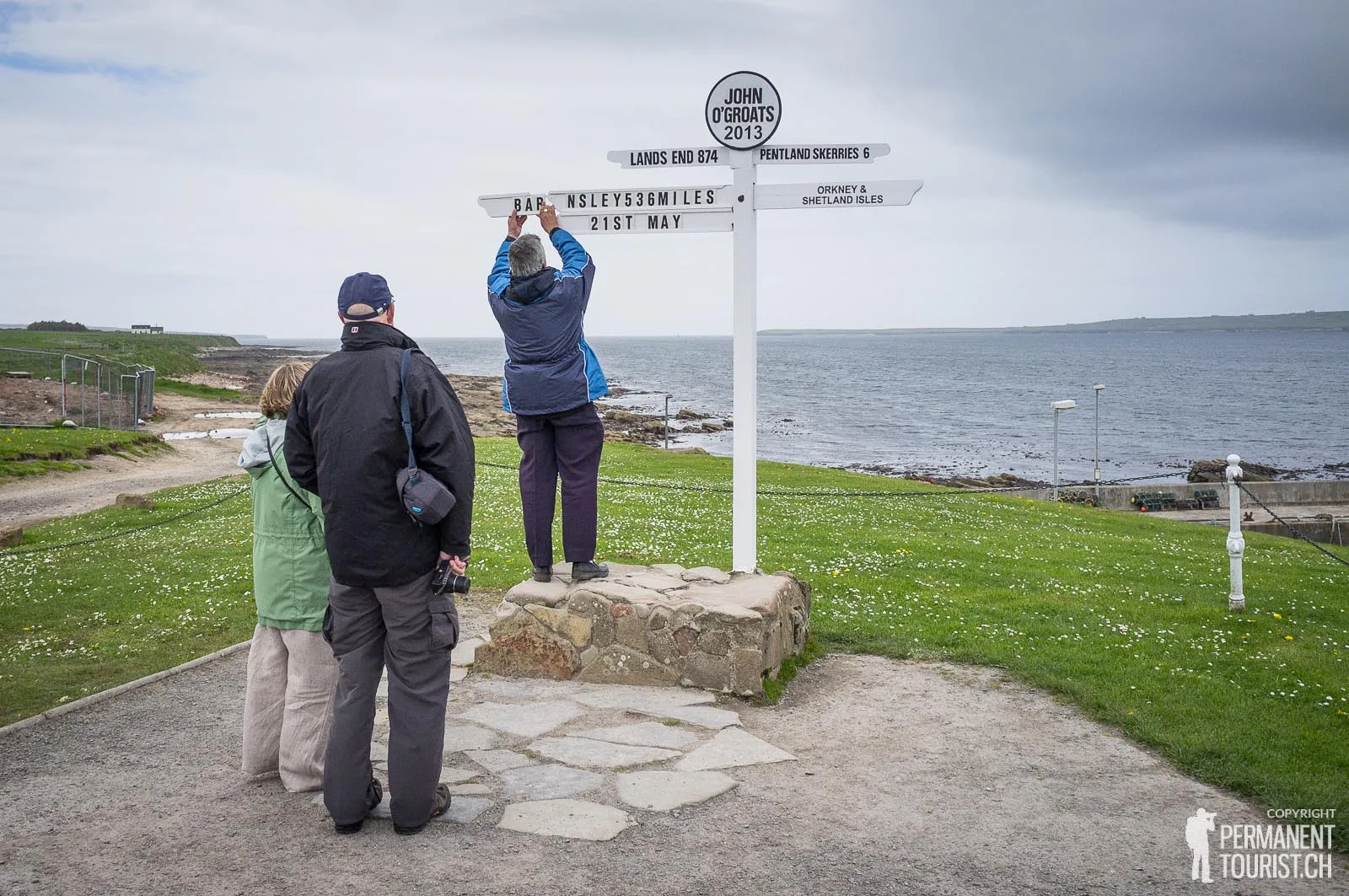
Unsurprisingly, the photographer who works there is very protective of his pitch, but I hadn’t realised that the sign is actually private: it was installed purely for the purpose of tourists having their picture taken. The photographer doesn’t allow visitors to take photos with their own cameras and even takes the cross-boards home with him when he finishes at the end of the day. The premise being that you pay to have the name of your town placed on the sign for the photograph, although the arrow doesn’t point in the correct direction, as I’d always imagined. I can only imagine how frustrating it must be to travel from Land’s End and arrive after the photographer’s finished for the day, to find the signpost bare.
I enquired about having our photo taken and even offered to pay the full price if the photographer would take the photo with my camera. But he huffily declined, saying that it was part of his business that he take the photos with his own camera – amazingly, what looked to be a thirty-year-old 35mm Minolta using colour film! – and have the prints sent by post to the tourists’ home address. I declined and gave up on the idea, settling instead for a sneaky couple of snaps when the photographer had turned his back.
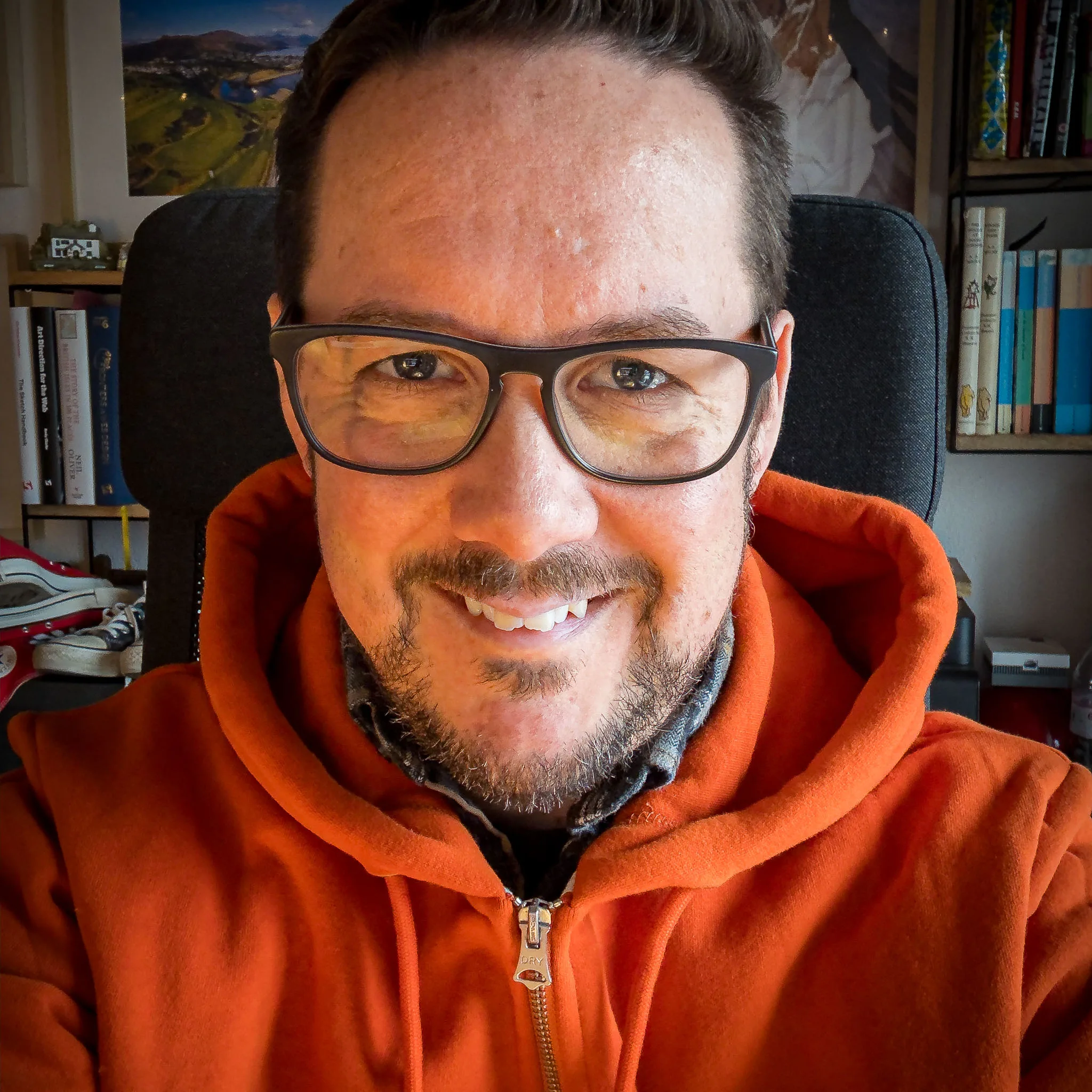
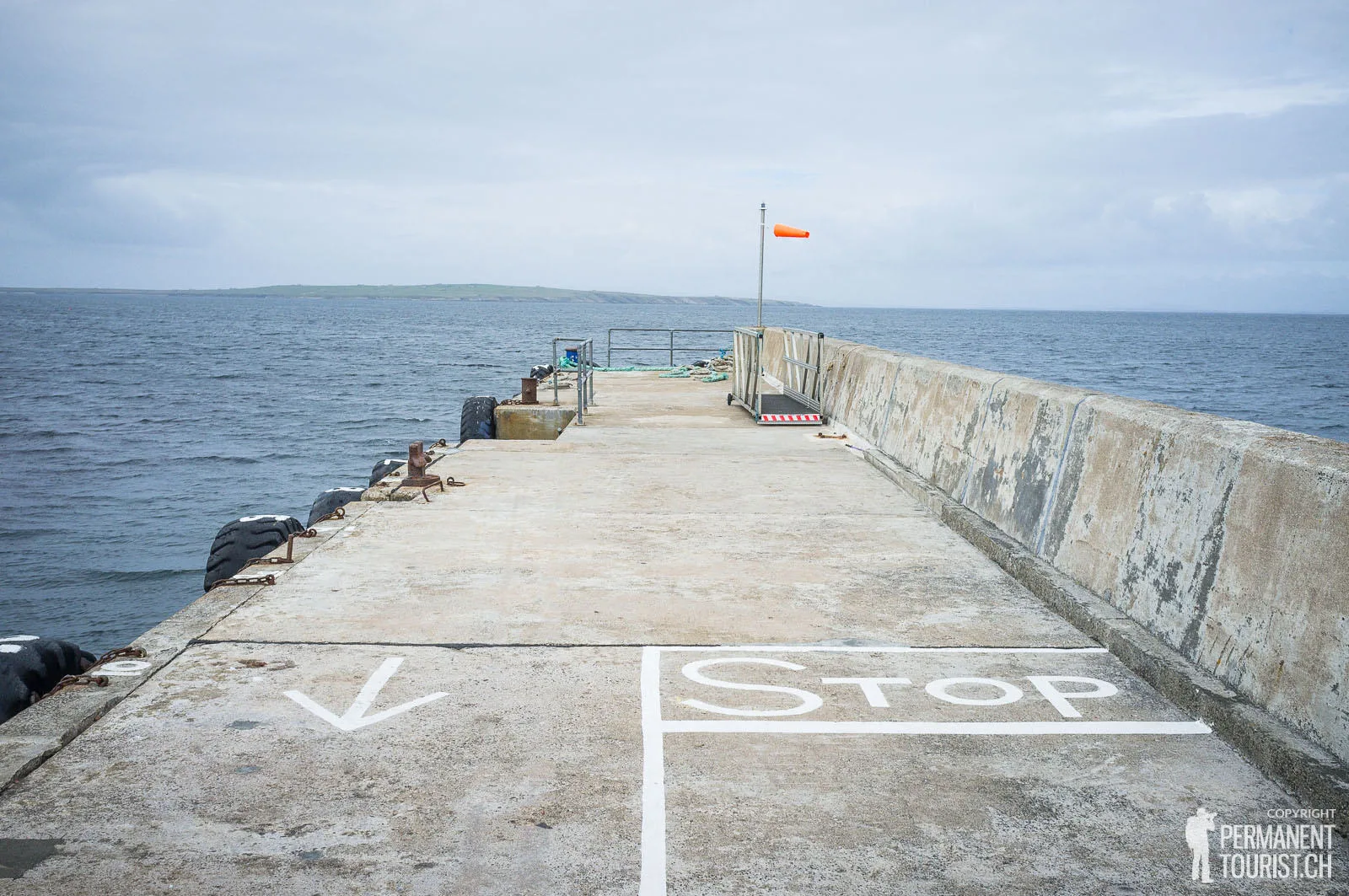
Leave a Reply